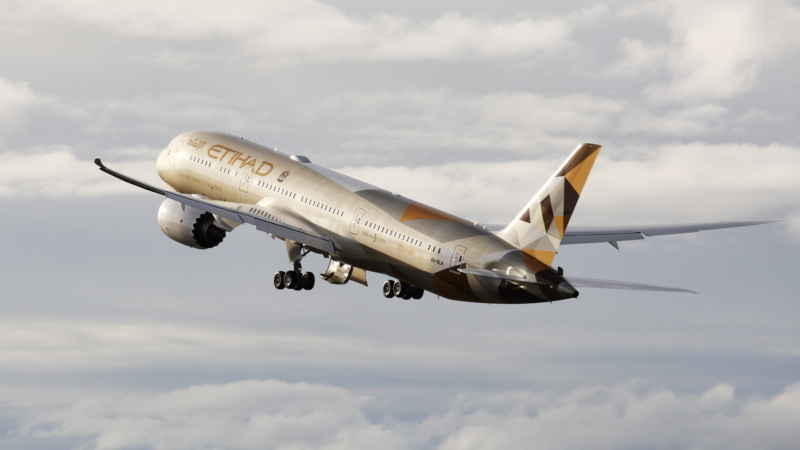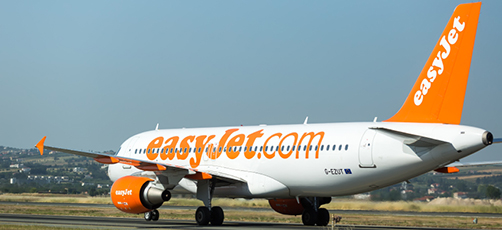Cleaner, Quieter and Smarter! Continuous Descent campaign delivers tangible improvements
18 August 2015Continuous Descents Operations (CDOs) are an established noise mitigation technique. By keeping aircraft higher for longer, it offer noise reductions of between 1 to 5 decibels per aircraft on the approach from between 25 to around 10 miles to touchdown. CDOs are very well established in the UK, particularly in the London area where average performance across London’s four largest airports is around 86%. Across the rest of the UK the average performance is lower, around 70%.
In July 2014, NATS led the launch of the Sustainable Aviation CDO campaign which aims to increase the achievement of CDOs at 22 Airports across the UK, as well as begin considering CDOs from higher altitudes.
After recently winning the prestigious Business in the Community Award 2015 for Engaging Customers in Sustainability, we thought it would be good to look in detail at some of the successes over the first year of the campaign.
We set two main goals for the campaign – the first was to deliver over 30,000 additional quieter arrivals in the first year. We have exceeded that goal and actually delivered over 45,000 additional CDO arrivals compared to the year before the campaign launched. This is achieved in the context of air traffic growth of approximately 2.5%.
Our second goal was longer term and aims for an overall improvement of 5% in CDO rates across the UK – particularly at the airports outside London where current CDO rates aren’t so high. Against this goal, performance has been more static with the overall percentage rate for 22 UK Airports staying at 78%. However, this headline figure conceals some areas of excellent performance that we’ve highlighted below. We encourage Air Traffic Control units, airlines and airports to build on these successes to deliver further improvements in the coming year. Here’s what they said:
Melanie King, Environment Manager, Bristol Airport, said: “At Bristol Airport, we collect CDO data via our Noise and Track-Keeping System (ANOMS). We use this date to produce league tables, which are presented at the regular FLOPSC (Flights Operations Safety Committee) meetings with the airline base captains. Based on CDO performance and compliance with the airport’s Noise Preferential Routes (NPRs), ‘Tracker Awards’ are presented annually to the airline. The best performing airline even gets a cake, which usually goes down very well in the crew room!
“This year, airline base captains have begun to receive weekly reports on CDO compliance, which include details of the flights and a map of radar tracks. This allows for a quicker analysis of operations.”
Fact: CDO performance at Bristol is up by 1.1% since July 2014 and January-June 2015 is up 1.6% when compared to the same period last year. The most significant change at the airport seems to be with Thomas Cook, who has achieved 13% improvement at Bristol!
Mark Burgess Head of Air Traffic Management & Flight Performance Airside Operations, Heathrow Airport, said: “In June 2015, Heathrow reported its best ever CDO performance, 89.7%, a fantastic result. For many years we have engaged our airlines and published Continuous Descent league tables. The performance of our main carriers regularly exceeds 90% but there are still some operators who were not doing so well. This year we worked specifically with LOT, Austrian, Aegean and SAS, sharing our data with the airlines and reviewing procedures to try to understand why CDO rates were not as high as they could be. What we found was that some airlines didn’t have procedures in place for CDOs, so we helped develop these. A key success was sharing weekly CDO performance stats with the airlines so that they could share this with pilots and work on refining procedures and operational practice. The outcome has been astonishing. We’ve seen these airlines CDO achievement increase from around 50% to over 90% in just a few months. Clearly we need to recognise the role that Heathrow approach controllers at Swanwick have played in this, but the results show that when airports, airlines and ATC work together we really can deliver a significant change in CDO performance.”
Linton Foat, Thomas Cook Airlines, Flight Operations – Safety & Quality Manager, said: “At Thomas Cook Airlines, we undertook a publicity campaign to increase pilot awareness around the definition of a CDO and what flight profile ATC would expect. To further embed this culture into our green standard operating procedures, our Training Department has also reinforced this on operational line checks and as a discussion item in the simulator. At each base, our Regional Pilot Managers have been briefed on CDO performance and have tried to maintain an emphasis on CDO performance in their communications to pilots. In addition to pilot focused activities, the introduction of new aircraft (Airbus A321) and new airport arrival (RNAV) procedures have enabled better navigation information to pilots that contribute to improved continuous descent planning.”
Ian Revell, Airport Watch Manager, NATS Manchester, said: “In summer 2014, NATS Controller Lee Grant accompanied a British Airways flight to observe arrivals procedures into Manchester. It was noticed that the descent planning boxes required aircraft to be minimum stack level (MSL) by the speed limit points. The speed limit points are a distance away from the hold and consequently aircraft were descending earlier than actually required. In December 2014, NATS delivered a change to the Manchester standard arrival procedures which means aircraft can stay higher for longer during their descent, reducing noise and saving fuel. This change is clearly having the desired effect: for the period of January to June 2015, British Airways CDOs to Manchester are up by 5-10% when compared to the same period last year! It’s fantastic to see this success and recognise that the collaboration between NATS and British Airways last year is now paying dividends.
“Our other activity at Manchester has been the production of a guide to our airspace – specifically for FlyBe – explaining when crews can expect descent. This has gone down well with the airline and we are now considering expanding it to other locally based carriers. Manchester Airport was the first to achieve Eurocontrol’s certification for Collaborative Environmental Management (CEM) and this particular initiative is a great example of the partnership approach adopted by MAG, NATS and the airlines.
“I’m also sharing monthly CDO performance figures with the controllers here to keep the CDOs profile up and reinforce our commitment to meeting the Sustainable Aviation goals.”
Sarah White, Sector Controller, Area Control, NATS Swanwick, said: “Even at Swanwick, where terminal control CDO rates are world class at an average of around 90%, we’ve still been raising awareness and encouraging further improvements. In summer 2014, just after the Sustainable Aviation CDO campaign was launched, I delivered over 30 separate 25-minute CDO briefings to our London Terminal Control approach controllers. The briefings were well-received, as was the ‘pat on the back’ for doing so well! But they weren’t complacent. The controllers understand that our customers, both airports and airlines, need to do everything possible to reduce noise and minimise fuel burn and emissions – and they are fully committed to their part in helping to deliver that.”
Well done to everyone who’s been involved in the CDO campaign so far. We will continue to work through Sustainable Aviation with airports and airlines, and also directly with NATS approach controllers, to achieve even better CDOs – from low levels as well as from higher altitudes too. Keep up the great work!
Comments
Please respect our commenting policy and guidelines when posting on this website.





18.08.2015
15:26
Chairperson
You have NOT proved this to be quieter!! The residents beneath these trials know this …no coincidence that complaints to Heathrow went up neatly 300% and that was only from residents with access to and able to use Internet….elderly and children have been completely disregarded from the complaints system used by Heathrow……
20.08.2015
14:22
Pilot Ollie
#PilotOllie #PilotPolly both flew CDA’s into Heathrow last night so all the children could sleep soundly.
24.08.2015
16:44
Carrie Harris
Head of ATM EnvironmentHi Chairperson, thank you for reading my post and for your comment.
The post describes the progress made with the UK-wide Sustainable Aviation Continuous Descents Campaign, one year after its launch. Continuous descents have been delivered for many years in the UK and are an established noise mitigation technique involving keeping aircraft higher for longer, therefore reducing the level of noise experienced on the ground. They are carried out during the arrival phase as aircraft approach the airport. I believe your comment is referring to the departure trials that ended in Autumn 2014 and were designed to identify options for managing noise as aircraft leave an airport.
Noise benefits of Continuous Descents are in the range 1-5 decibels per aircraft under the approach route from around 25nm to 9nm to touchdown, when compared to a stepped descent. A study by the UK CAA Environmental Research and Consultancy Division, ERCD (3132), for the London Airports suggested Continuous Descents from 7,000ft can offer noise reductions of between 1-5 dBA SEL. The upper end of this range relates to benefits identified for some larger aircraft types. Benefits towards the lower end of the range can be expected for small to medium aircraft types.
I hope this helps.
16:44
Carrie Harris
Head of ATM Environment11.12.2015
06:55
Joseph Edwards
Convenience and safety of the passengers should be paid much greater attention though cleanliness is also a big factor.
10.05.2016
22:49
Mr Reid
Noise noise noise from a Company that worries about making money not the
New communities effected by NEW AIRCRAFT NOISE constantly!
07.09.2018
10:40
Tim Walker
good morning. I am overflown by low altitude London City Airport arrivals flying east to west over Kent, Bexley at under 2000 feet (20 miles from landing), then Lewisham (still 15 miles from landing), Southwark and Lambeth at under 1600 feet. Can you advise to what extent London City Airport is part of, or has shown any interest in following what appear to be sensible CDO principles to noise reduction and flight arrivals. many thanks
Tim